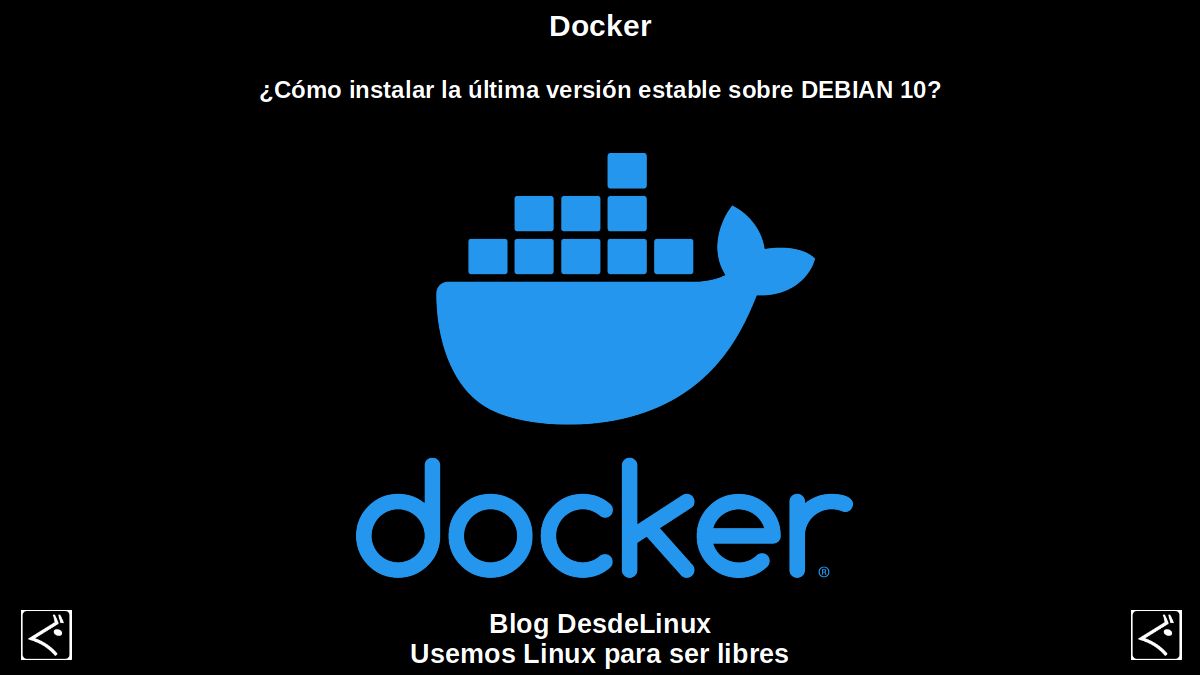
Docker: How to install the latest stable version on DEBIAN 10?
La virtualization of Operating Systems and Applications or Systems basically consists of being able to share in the same Hardware, several elements of these operating completely independently.
When it comes to virtualizing Operating Systems with free, free and / or open technologies, technologies or applications are often preferred, such as Promox, Xen, VirtualBox, QEMU or KVM. But when it comes to Applications or Systems, it is usually resorted mainly to Kubernetes or Docker.

These last 2 are container-based virtualization technology. In the case of Docker, it was released in the year 2013 as part of a open source development called docker-engine. That took advantage of the existing advances of the time, that is, the concepts and knowledge about containers to date from the Operating Systems free and / or open (Unix / Linux), Such as cgroups and namespaces, to advance this burgeoning area of technology.
On previous occasions we have talked about Docker, which is why we will not delve into what it is, or what its characteristics, facilities, or other details or elements are. So, we will really focus on installing the current version (19.03.8) about DEBIAN 10 (Buster) y GNU / Linux Distros, similar or based on these, such as MX Linux 19.
However, for more information you can access our previous publications on Docker.




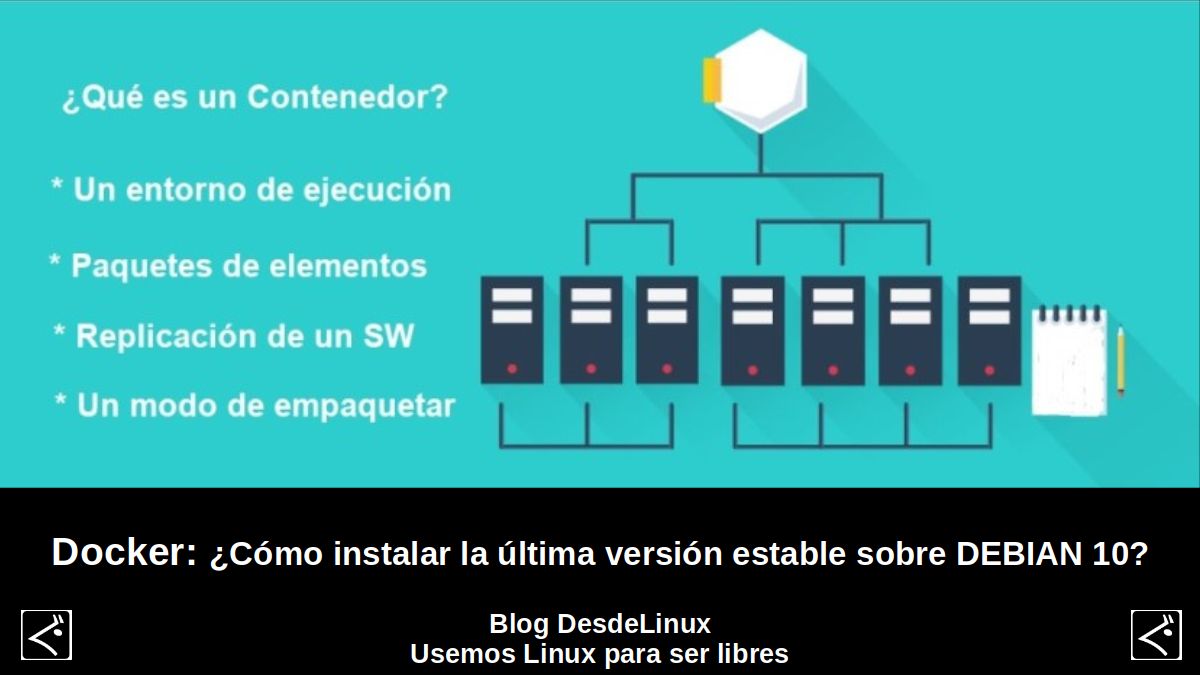
What is a Container?
Before starting the installation process of this container-based virtualization technology, to later be able to install any application or system through a "Container", it is important to make it clear to the less understood, what a container means.
Quoting the HPE (Hewlett Packard Enterprise) official page about said technology, it tells us the following:
"Application Containers are lightweight, run-time environments that provide applications with the files, variables, and libraries they need to run, thus maximizing their portability.".
"While traditional Virtual Machines (VMs) allow virtualization of computing infrastructure, Containers enable that of software applications. Unlike Virtual Machines, Containers use their host's Operating System (OS) instead of providing their own".
Docker: Installation process on DEBIAN 10 (Buster)
A. Step 1
Prepare the Operating system for the installation.
sudo apt update && sudo apt-get install apt-transport-https ca-certificates curl gnupg-agent software-properties-common
B. Step 2
Download the key to Official repository, configure the official Repository and validate the files available from it, with the version of our GNU / Linux Distro. For our case, DEBIAN 10 (Buster) or other GNU / Linux Distro, similar or based on it, such as MX Linux 19.
curl -fsSL https://download.docker.com/linux/debian/gpg | sudo apt-key add -
sudo add-apt-repository "deb [arch=amd64] https://download.docker.com/linux/debian $(lsb_release -cs) stable"
sudo apt update && apt-cache policy docker-ce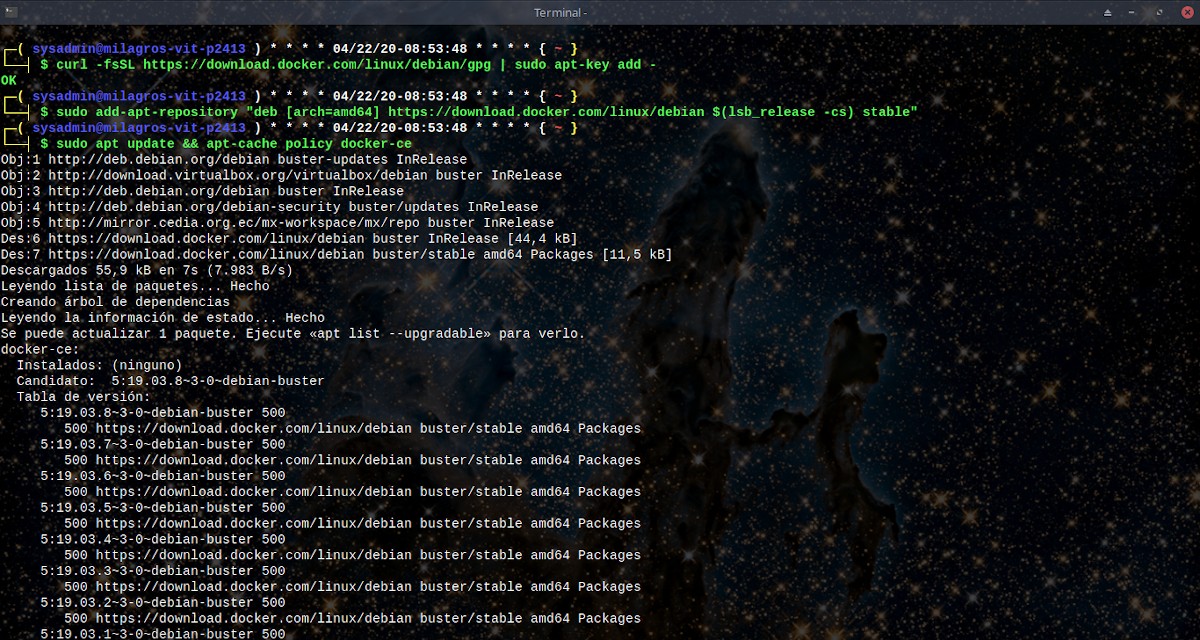
C. Step 3
Install the application and recommended essential files.
sudo apt install docker-ce docker-ce-cli containerd.io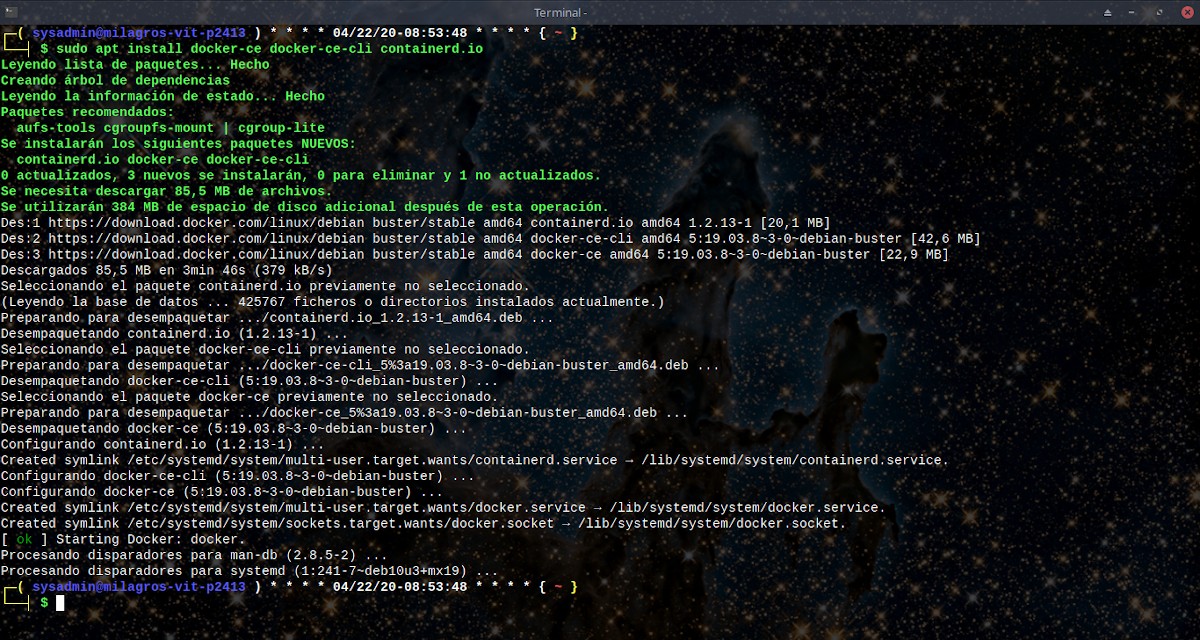
D. Step 4
Validate application installation, running the installation of the test container called Hello-world.
sudo docker run hello-world
E. Step 5
Check the version of the installed application.
docker -v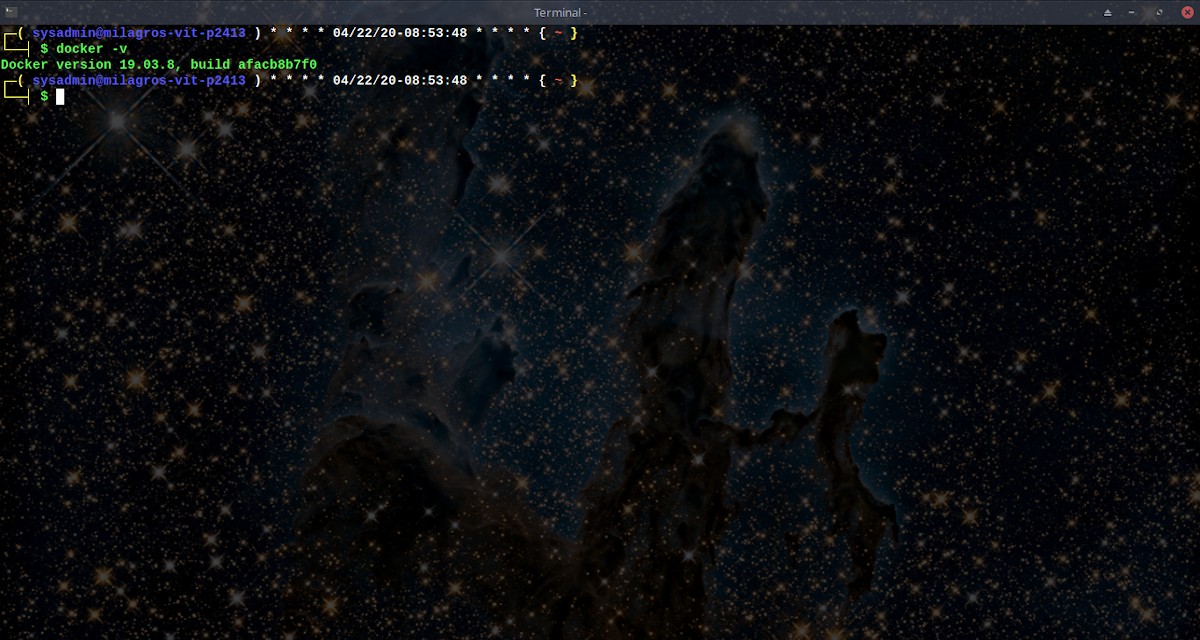
F. Step 6
This step is optional, since it is basically to check that the already installed container is not downloaded and installed again, when it is asked to run it again.
sudo docker run hello-world
G. Step 7
This other step can also be considered optional, as it is basically to allow a "Non-administrator user" can run a container without needing permissions "administator". For this case study, permission will be given to an existing user named "Sysadmin".
sudo adduser sysadmin docker
docker run hello-world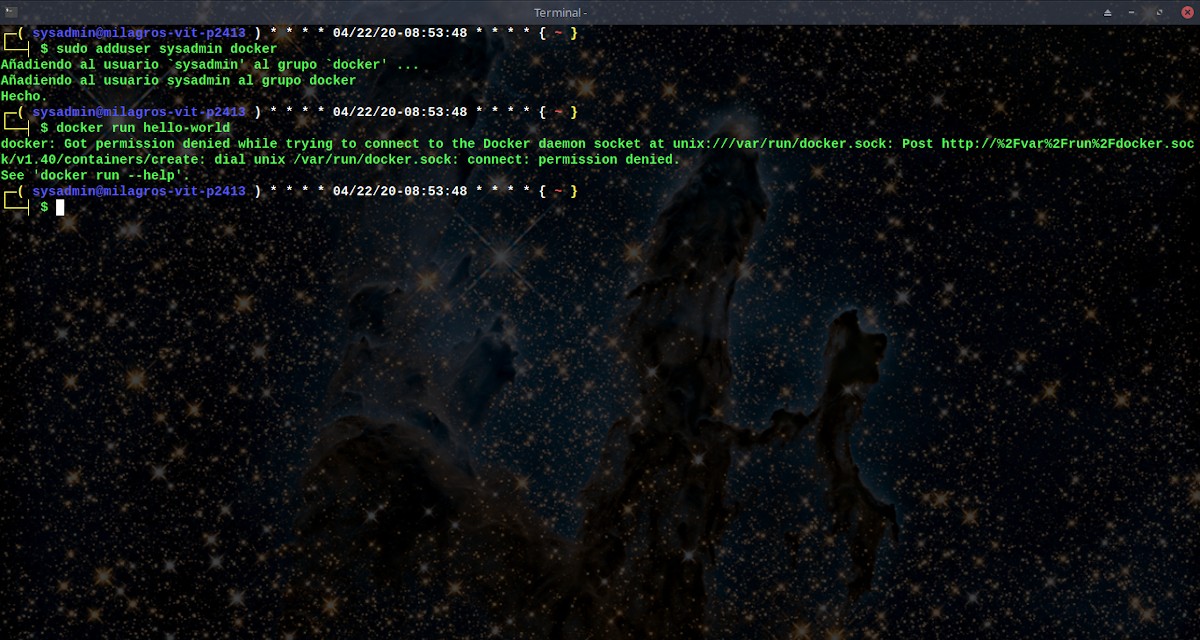
H. Step 8
Finally, the ideal thing before starting to use completely Docker, is to restart and validate the start of the Service and the execution of the test container.
sudo /etc/init.d/docker status
docker run hello-world
Later, in another publication about said technology or related to it, we will try the installation of some other application or system to continue learning to master it. However, for the more self-taught or curious, there is an excellent manual that contains more information related to installation on DEBIAN GNU / Linux 9/10 in the documentation section of the docker official site.
Finally, in case you want to know a little more about docker, how it works and is used in real life, you can access the following 2 links: RedHat y aws amazon.

Conclusion
We hope this "useful little post" about this excellent app and «Tecnología de Virtualización basada en Contenedores» call «Docker», which provides an additional layer of application virtualization abstraction and automation across multiple Operating Systems; be a lot interest and utility, For the whole «Comunidad de Software Libre y Código Abierto» and of great contribution to the diffusion of the wonderful, gigantic and growing ecosystem of applications of «GNU/Linux».
And for more information, always do not hesitate to visit any Online library as OpenLibra y jedit to read books (PDFs) on this topic or others knowledge areas. For now, if you liked this «publicación», don't stop sharing it with others, in your Favorite websites, channels, groups, or communities of social networks, preferably free and open as Mastodon, or secure and private like Telegram.
Or simply visit our home page at DesdeLinux or join the official Channel Telegram from DesdeLinux to read and vote for this or other interesting publications on «Software Libre», «Código Abierto», «GNU/Linux» and other topics related to «Informática y la Computación», and the «Actualidad tecnológica».